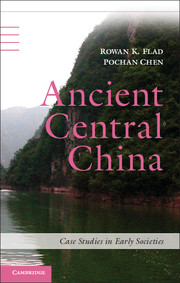Book contents
- Frontmatter
- Contents
- Figures
- Tables
- Boxes
- Acknowledgments
- 1 Introduction: Centers and Peripheries in the Ancient Yangzi River Valley
- Part I Setting the Stage
- Part II Political and Cultural Topographies
- 4 The Sichuan Basin: Shu and Its Predecessors
- 5 The Middle Yangzi: The Archaeology and History of Chu and Its Predecessors
- 6 Periphery at the Center: The Ba and Archaeological Cultures in the Three Gorges
- Part III Topographies of Economic Activity and Ritual
- Glossary
- Bibliography
- Index
6 - Periphery at the Center: The Ba and Archaeological Cultures in the Three Gorges
Published online by Cambridge University Press: 05 February 2013
- Frontmatter
- Contents
- Figures
- Tables
- Boxes
- Acknowledgments
- 1 Introduction: Centers and Peripheries in the Ancient Yangzi River Valley
- Part I Setting the Stage
- Part II Political and Cultural Topographies
- 4 The Sichuan Basin: Shu and Its Predecessors
- 5 The Middle Yangzi: The Archaeology and History of Chu and Its Predecessors
- 6 Periphery at the Center: The Ba and Archaeological Cultures in the Three Gorges
- Part III Topographies of Economic Activity and Ritual
- Glossary
- Bibliography
- Index
Summary
Historical Accounts of Yong and Ba
In the last two chapters, we outlined the culture-history and archaeological data from the Chengdu Plain and the Middle Yangzi to provide a sketch of the political and cultural topographies of these regions from the Late Neolithic through the Bronze Age. Here we turn our attention to that in between – the Three Gorges – and adjacent regions along the Yangzi River and its tributaries.
Similar to the Sichuan Basin, the Three Gorges region is not well attested in historical documents for the time period under consideration here. Several ethnonyms appear in scattered historical texts and may refer to groups in the region. These terms may, to an extent, have been imposed on heterogeneous local cultures from the outside as part of a “schematic account of the past” (Bagley 1999: 230) that served to support a particular perspective on political order through the “geographical violence” that can be brought about by naming (Said 1994: 225). Colonizers have often considered differences among indigenous groups to be irrelevant (Dominguez 2002: 69). By using a single term or a small number of terms to refer to all the “others,” indigenous identities are eliminated (Lightfoot and Martinez 1995). We should be particularly cautious, therefore, when dealing with external textual sources that characterize ethnic groups in the past.
- Type
- Chapter
- Information
- Ancient Central ChinaCenters and Peripheries along the Yangzi River, pp. 140 - 168Publisher: Cambridge University PressPrint publication year: 2013



